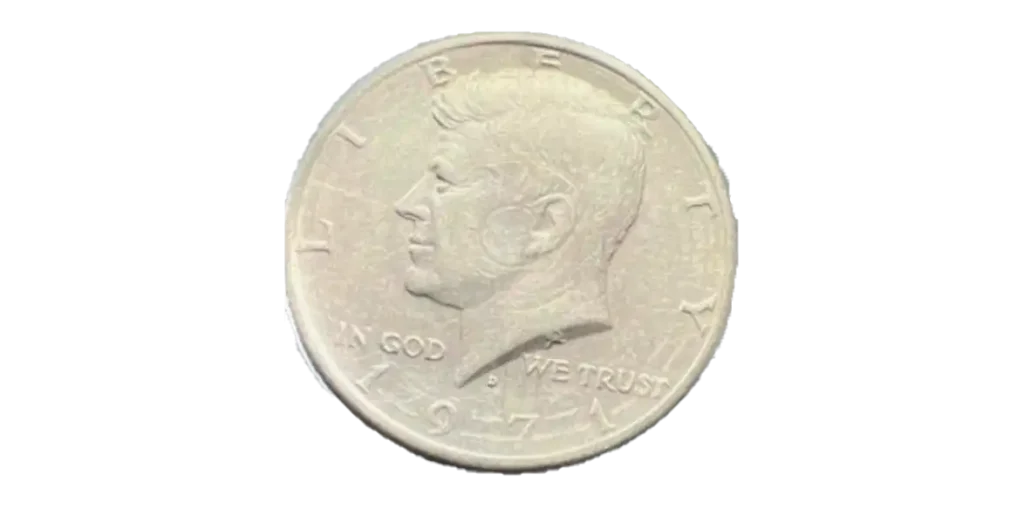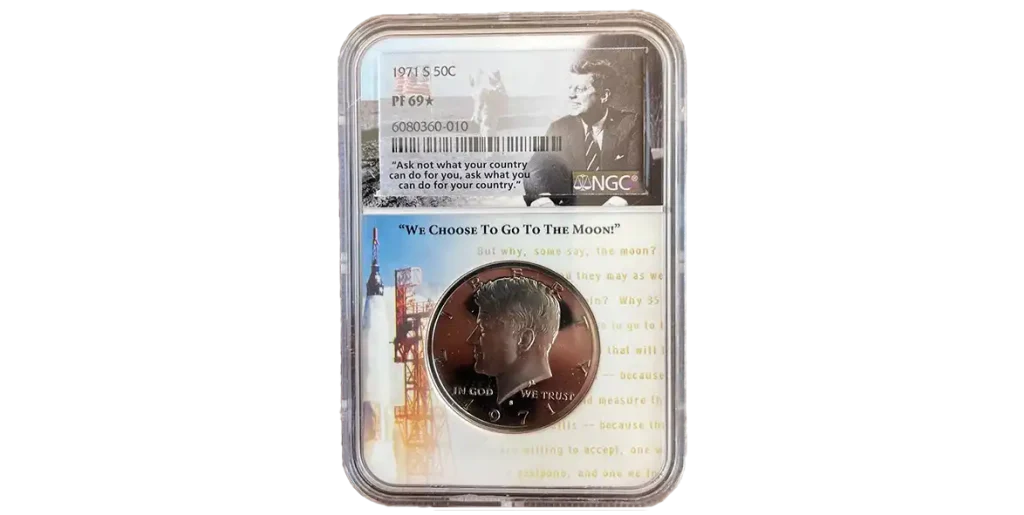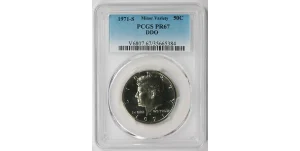
About the Author
Sarrah Winsley
Sarrah is an inspiring numismatic hobbyist from Concord, New Hampshire. She has a rich history of charitable lecturing in her area, where she likes to show the students her pride – a huge collection of coins and paper money, starting from the Civil War till today. This collection is a family treasure, as she often reminds her students, “if anyone would call your hobby pointless, just tell them who I am”. Sarrah expanded her grandfather’s collection just in 20 years by finding the small pieces most people don’t pay attention to.
“It’s so easy to get a rich collection – just start looking in the pockets of your old winter’s jacket or look in a drawer”
Sarrah’s collection has grown since she inherited it from her grandfather. But she didn’t focus on high-priced rarities and built them piece by piece. Sarrah found hidden gems in places others never bothered to look: pocket change, estate sales, flea markets, even rolled coins from the bank. Her secret is simple: a sharp eye, patience, and a deep respect for history.
A recognized member of the NorthEast Numismatic Community, Sarrah has authored numerous practical guides and academic articles aimed at making the world of numismatics accessible to everyone.
When she’s not cataloging new finds or giving talks, Sarrah enjoys volunteering at historical societies and mentoring young collectors. For her, numismatics is a topic that helps preserve stories that would otherwise be forgotten.
Introduction
A lot of people think that the 1971 Kennedy Half Dollar belongs only in the money jar, and they are not wrong particularly. So, how to discover them?
Following the end of silver in everyday circulation coins in 1965, the Mint introduced a clad (copper-nickel) version of the half dollar. Today, these coins are important for numismatic history. Yes, 1971 half dollar coin value is usually low, but several rarities, like limited silver proofs and minting errors, if you should be looking at.
This guide will explain you the coin’s design, production, and desirability, covering:
- 1971 Half Dollar Key Facts (composition, mint marks, mintage)
- 1971 Half Dollar Value Chart (2024 Prices)—including notable errors
- How to Tell if Your 1971 Half Dollar Is Silver
- Frequently Asked Questions about value, rarity, and collecting
- Final Verdict: Is Your 1971 Half Dollar Valuable?
By the end of this article, you’ll know exactly what to watch for and whether your 1971 JFK half dollar coin value grading and putting in the collection.

1971 Half Dollar Key Facts
It was the first year this coin was minted without any silver content for regular circulation. Prior to this, Kennedy half dollars (from 1965 to 1970) contained 40% silver, and the original 1964 issue was 90% silver.
In 1971, both the Philadelphia (no mint mark) and Denver (“D”) Mints began striking the coin using a copper-nickel clad composition. It happened because silver started rising in price and the government decided to remove precious metals from everyday coinage. That year, the San Francisco Mint also issued proof versions of the half dollar with 40% silver content, but only for collectors.
The design, having President John F. Kennedy on the obverse and the Presidential Seal on the reverse, remained unchanged. Though minted in large numbers, the 1971 issue includes some rare varieties, such as the 1971-D Doubled Die Obverse and the 1971-S “No FG” error.
President John F. Kennedy was placed on the half dollar as a tribute following his assassination in November 1963. The decision was made as a way for the U.S. Mint and the nation to honor his legacy. Within days of his death, plans were set in motion to feature him on a coin. His widow, Jacqueline Kennedy, chose the half dollar denomination because it was not widely used in daily transactions, meaning his image would be preserved more as a commemorative symbol than as everyday currency.

The design was created by Gilroy Roberts (obverse) and Frank Gasparro (reverse), both of whom had previously worked on Kennedy’s official presidential medal. Congress approved the change in record time, and the first Kennedy half dollars were released in early 1964, just a few months after his death.
In addition to the half dollar, President John F. Kennedy has appeared on a few other U.S. coins and medals, though none as widely circulated. The Kennedy Half Dollar remains the only standard U.S. coin to feature his portrait, but collectors may also encounter Kennedy on:
- Presidential $1 coin: released in 2015 as part of the Presidential $1 Coin Program, this coin features Kennedy’s portrait on the obverse and the Statue of Liberty on the reverse. It was produced mainly for collectors and not intended for widespread circulation.
- U.S. Mint Presidential Medals: Kennedy has been honored with several bronze and silver medals issued by the U.S. Mint. These often have his portrait and commemorative inscriptions related to his presidency or legacy.
- Commemorative Issues: some private and international mints have also issued medals or coins featuring Kennedy’s image, though these are not official U.S. currency.
We’ll start with the basics, the main facts about this coin. The 1971 Kennedy half is one of the final issues of its kind before the modern era of fully clad coinage. What you should know about it:
| Composition | Copper-Nickel Clad (Standard): 75% copper, 25% nickel (outer layers);40% Silver (S-Mint Proofs Only): 40% silver, 60% copper |
| Mint Marks | No mint mark = Philadelphia;”D” = Denver;”S” = San Francisco (silver proofs only) |
| Mintage | Clad (Philadelphia & Denver): ~350 million;40% Silver Proofs (San Francisco): ~4 million |
Just as a note, standard clad (shield reverse) design is copper-nickel on copper core was introduced in 1971 to minimize reliance on silver. The 40% silver half-dollars were proof-only coins produced in San Francisco for collectors. Of course, half dollar coin 1971 value rises here, because coins have silver value and higher collector demand.
What about mint marks and their meaning?
- No mint mark (Philadelphia): in massive production and the most common
- “D” (Denver): less common but still plentiful
- “S” (San Francisco): proof-only silver coins, key to liberty 1971 half dollar coin value
Mintage:
- Clad (P & D): ~350 million
- 40% Silver (S): ~4 million
1971 Half Dollar Value Chart (2024 Prices)
Now as we figured out what this coin looks like and what the standards are for 1971 half dollars, we need to know what kind of varieties you can get. This table has 2024 1971 liberty half dollar coin value based on rarity, mint mark, and condition:
| Type / Variety | Value Range |
| 1971-P/1971-D Standard Clad (Circulated) | $0.50 – $1 |
| 1971-P/1971-D Uncirculated (MS63–MS65) | $2 – $5 |
| 1971-D Doubled Die Obverse (DDO) | $50 – $200+ |
| 1971-S 40% Silver Proof (Uncirculated) | $5 – $15 |
| 1971-S “NoFG” (Missing Flanagan Initials) | $20 – $100+ |
Ok, but are there any rare varieties to watch for? Yes! For example:
- 1971-D Doubled Die Obverse (DDO) – slight doubling of lettering or date; sharply struck examples of 1971 d half dollar coin value $50–$200.
- 1971-S “No FG” (Missing Designer Initials) – absence of “FG” initials behind Kennedy’s neck; important proof variety worth $20–$100.
How to Tell if Your 1971 Half Dollar Is Silver
If you own a 1971 half, you’ll likely want to confirm whether it’s the collector-grade 40% silver version. How do you check that:
Check the Mint Mark
Only the “S” mint-marked San Francisco proofs contain silver. If your coin has no mint mark (P) or a D, it’s a copper-nickel clad regular strike with no silver content.
Weigh It
- Silver Kennedy half: 11.50 grams
- Clad half dollar: 11.34 grams
Even a 0.16g difference is aт indicator of authenticity; use a precise digital scale.

Inspect the Edge
To tell if your 1971 Kennedy Half Dollar is silver, one of the simplest and most effective methods is to inspect the edge of the coin. Authentic silver coins from the era will have a solid, consistent edge that looks smooth and metallic all the way around. There should be no color variation, just a uniform, silver-gray tone across the entire edge. This solid coloring is due to the 40% silver content present in certain proof coins minted in San Francisco (marked with an “S”).
Clad coins, those made from copper-nickel, display a distinct copper-colored stripe along the edge. This is because the outer layers are nickel, but the core is copper. When the coin is struck, the edge exposes that copper core, producing a two-tone rim that clearly stands out from the uniform silver edge of a 40% silver coin.
So if you’re unsure about your coin’s composition, just tilt it under a light and take a close look at the rim. If you spot that reddish or copper stripe, it’s a standard clad issue. But if the edge appears solid silver all the way through, it may be a silver proof, and potentially worth a closer look.
If you’re still unsure, using a magnet can help, silver is non-magnetic, just like clad coins, but it’s not a conclusive test. A precise scale or professional grading can confirm the material.
Frequently Asked Questions
How much is a 1971-S silver proof half dollar worth?
Most S-Mint proof 40% silver coins in flawless condition sell between $5–$15, depending on tone and visual condition. But, there are exceptions, like the “No FG” variety which sells for $20–$100+.

What’s the rarest 1971 half dollar?
One of the most famous is the 1971-S “No FG” proof, missing the designer’s (Frank Gasparro) initials. You will typically find them between the tail feathers of the eagle and the right leg, very close to the rim. It’s a small detail, but the mistake costs a lot. Those initials in some 1971-S coin models were mistakenly polished off the die during mint maintenance The1971 jfk half dollar coin value of such type can be $20 – $100+, but graded PF69 examples can go even higher and be somewhere around $150–$300+.
Another rare find is the 1971-D DDO, a rare occurrence of doubling on the obverse. A doubled die obverse (DDO) happens when the coin die-making process goes wrong. How exactly? When a working die gets a doubled image from the hub (because of misalignment or repeated impressions), every coin struck with that die shows the same doubling.
In the case of the half dollar coin value 1971 D, the doubling is not from a minting shift or vibration during strike, it’s part of the actual die itself, which makes it a true die variety. Collectors should look closely at: “IN GOD WE TRUST”, “LIBERTY” and the date “1971”. Can cost from 1 to 5 dollars.
These areas may show clear doubling, especially on the bottom edges or thick outlines of the letters and numbers. A loupe (10x magnifier) helps a lot when checking for this. Value of such coins can be:
- Circulated DDO examples: $50 – $100+
- Uncirculated DDO examples: $100 – $250+
- Graded high MS condition (e.g., MS65+): can reach $300 – $500+, especially if attributed by PCGS or NGC.
Can I find a 1971 silver half dollar in circulation?
It’s exceptionally unlikely. Proof-only silver coins were sold to collectors in coin sets and not released for public use. If you find a circulated silver half, it’s almost certainly a mistake or fake money and, of course, it needs closer evaluation by a professional.
Should I clean my old half dollar?
No, because cleaning reduces value. Collectors are fine with natural patina, and cleaning will often lead to “damaged” holder designation from grading services, lowering value. As a matter of fact, if you have any paper money or coins of any metal, you should never clean them. Even if they are dirty, there is a chance that you may damage vital details on your possession, so, let them be dirty.
Final Verdict: Is Your 1971 Half Dollar Valuable?
In short, yes, a half dollar coin value 1971 can be high, if it meets certain criteria. Which one?
- Most 1971-P & D clad half dollars: worth between $0.50 – $5—mainly interest lies in uncirculated or mint condition.
- 1971-S 40% half dollar silver coin 1971 value: worth $5 – $15, with slight premiums for attractive toning or flawless strike.
- Rare errors (DDO, No FG): $20 – $200+, depending on condition and certification.
Unless your coin is an S proof, a major error variety, or is uncirculated, its value will cost near face value. But if it has the right combination of mint mark, condition, and variety, you may have a higher market appeal than expected. For example, half dollar coin value 1971 no mint mark can cost like 5 dollars, but rare examples may go higher than 200 dollars. To check that, you can use a coin identificator online, or use a service of a professional numismatic.